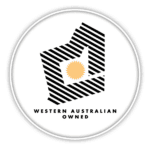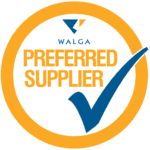Clear Communication: The Crucial Role of Mining Signs
Mines can be challenging to navigate, they’re full of heavy machinery, intricate processes, and potential hazards. In this environment, effective communication through mining signs becomes a lifeline for both workers and the industry. Corsign is here to champion these guardians of the workplace.
The Significance of Mining Signs
Communication through mining signs is the linchpin of a safe, efficient, effective, and compliant mining industry. As the industry continues to evolve and face new challenges, well-designed and strategically placed signs become vitally important.
Investing in effective communication infrastructure safeguards the well-being of those working in the mines and contributes to the overall sustainability and success of Perth’s thriving mining sector. Let’s look at the role signs play in clear communication.
Signage Types
The specific types of signage may vary depending on the mine’s location, size, and the nature of its operations. There are however common types of workplace signage typically found in mines. Here are some examples:
Danger Signs:
- High Voltage
- Explosives
- Confined Space
- Falling Objects
Warning Signs:
- Slippery Surface
- Heavy Equipment
- Chemical Storage
Mandatory Signs:
- Hard Hat Area
- Safety Glasses
- Ear Protection
Prohibition Signs:
- No Smoking
- No Entry
- No Unauthorised Personnel
Emergency Information Signs:
- Emergency Exit
- First Aid Station
- Emergency Assembly Point
Fire Safety Signs:
- Fire Extinguisher
- Fire Assembly Point
- Fire Alarm
Traffic Control Signs:
- Stop Signs
- Speed Limit Sign
- One-Way Traffic
Informational Signs:
- Map of the Mine
- Safety Procedures
- Hazard Communication
Safety First: Ensuring Workplace Safety
Mining signs that display clear and concise messages are the backbone of safety protocols within mining sites.
- Visual Guidance: Mining signs act as straightforward visual cues, providing essential information to individuals navigating mining sites. They help workers and visitors understand the lay of the land, guiding them through potential dangers and safety procedures with clarity.
- Warning against Risks: There are many potential dangers in mining operations due to their ever-changing and sometimes unpredictable setting. Mining signs function as pre–emptive warnings, alerting individuals to hazardous materials, restricted zones, or the need for safety gear.
- Accident Prevention: Safety is a top priority in the mining industry, and signs act as practical tools for accident prevention. These signs reduce the likelihood of accidents by reminding individuals of safety protocols,. Tthis benefits both experienced miners and newcomers navigating the mining environment.
- Compliance and Universal Understanding: Mining signs are tangible representations of compliance with safety regulations. They play a crucial role in ensuring that safety standards are not only established but consistently followed. The universal language of these signs fosters a shared understanding of safety measures, promoting consistency within the workforce.
As the mining industry continues to evolve in Perth, the significance of these signs in maintaining a safe and efficient workplace remains a steadfast commitment.
Compliance and Regulations: Navigating the Legal Landscape
Like any other, the mining industry is subject to many regulations and compliance standards. Clear and strategically placed signs are pivotal in conveying information.
- Environmental Protection Measures: Environmental protection is one of the primary areas where compliance is paramount. Perth’s mining signs act as visible indicators that highlight specific measures safeguarding the environment, by clearly communicating these measures, the signs ensure the mining activities are conducted to minimise environmental impact and promote long-term ecological sustainability.
- Mandatory Safety Gear Zones: Safety gear is a non-negotiable aspect of mining operations, and mining signs contribute to its enforcement. These signs designate areas where specific safety gear, such as helmets, goggles, or respiratory equipment, is mandatory. Signs clearly distinguish these zones, playing a crucial role in ensuring workers are adequately protected in areas with potential hazards, aligning with occupational health and safety regulations.
- Adherence to Specific Mining Practices: Perth’s mining signs also communicate adherence to specific mining practices mandated by regulatory bodies. These could include outlining proper blasting procedures, delineating no-entry zones during certain operations, or signalling designated access routes. Compliance with these specific practices is not only a legal obligation but contributes to the efficient and responsible extraction of resources.
- Sustainable and Responsible Mining: Beyond being a legal imperative(?), compliance with regulations via mining signs underscores the mining industry’s commitment to sustainable and responsible practices. By following established guidelines, the industry aims to minimise its environmental footprint, prioritise worker safety, and contribute to the longevity of mining operations in Perth.
Mining signs are instrumental in fostering a culture of compliance, accountability, and sustainability within the mining sector.
Additional Factors
Whilst safety and compliance are two important factors communicated via mining signs, there are other factors to consider.
- Efficiency and Productivity: Mining signs contribute significantly to operational efficiency. Well-placed signs help streamline processes, directing traffic flow within and reducing the likelihood of bottlenecks. In Perth, where mining operations are a cornerstone of the economy, optimising efficiency is critical to maintaining competitiveness in the global market.
- Emergency Preparedness: Mines are complex environments where unforeseen emergencies can arise. Properly designed and strategically located signs are indispensable in guiding personnel during emergency evacuations and providing essential information about emergency response procedures. In Perth, a city prone to occasional extreme weather events, clear communication through signs takes on added significance.
- Multilingual Communication: The mining industry is characterised by a diverse workforce with employees from various cultural backgrounds. Utilising mining signs that incorporate symbols, colours, and text in multiple languages ensures that communication is effective across the entire workforce.
In the landscape of resource extraction, clear communication through mining signs is the beacon that guides the industry toward a safer and more prosperous future.
Sign Design
Professional assistance in designing mining signs is essential for ensuring safety, compliance, and effectiveness. Their efficiency, feedback-driven approach, and integration with overall safety strategies make professional help an invaluable investment in creating a safer work environment in mining operations.
Creating effective workplace signage for mines is crucial for ensuring the safety and well-being of workers. Here are some key considerations to keep in mind:
- Clarity and Visibility: Ensure that signs are clear, easy to understand, and visible from a distance. Use large, legible fonts, contrasting colours, and appropriate graphics to enhance visibility.
- Language and Symbols: Use universally recognised symbols and standardised safety signs. Consider the diverse linguistic backgrounds of workers and use symbols to convey messages without relying solely on text.
- Consistency: Maintain consistency in the design and format of signs throughout the mine. Standardise colours, shapes, and symbols to convey specific types of information consistently.
- Relevance: Tailor signage to the specific hazards and conditions present in each area of the mine. Regularly review and update signage to reflect changes in operations, hazards, or regulations.
- Placement: Place signs where they are easily noticeable and provide sufficient time for workers to react. Ensure that equipment, materials, or other obstacles do not obstruct signs.
- Illumination: Provide adequate lighting for signs, especially in areas with low visibility or during night shifts. Consider using reflective materials to enhance visibility in low-light conditions.
- Durability: Select materials that can withstand the environmental conditions of the mine, including exposure to dust, moisture, and varying temperatures. Regularly inspect and replace signs that show signs of wear or damage.
- Training and Education: Conduct training sessions to familiarise workers with the meaning of different signs and the importance of following safety instructions. Ensure that new employees receive proper orientation regarding the mine’s signage system.
- Regulatory Compliance: Stay informed about local and national regulations regarding safety signage in mines. Ensure that all signage complies with relevant standards and regulations.
- Emergency Response: Clearly mark emergency exits, evacuation routes, and assembly points. Include emergency contact information and procedures on appropriate signs.
- Feedback Mechanism: Establish a feedback system for workers to report issues or suggest improvements related to signage. Act promptly on feedback to address concerns and enhance the effectiveness of the signage system.
- Risk Assessment: Conduct regular risk assessments to identify new hazards and determine if additional signage or changes to existing signage are needed.
- Multilingual Considerations: If the workforce is multilingual, consider incorporating multiple languages on critical safety signs or use universally understood symbols.
- Customisation: Consider customising signage based on the unique characteristics of the mine, take into account specific hazards and operational aspects.
Through careful consideration of these factors, mines can develop a comprehensive and effective signage system. Regular reviews and updates should be conducted to ensure ongoing relevance and effectiveness.
Communicating Clearly with Corsign
As industry specialists, Corsign understands the unique challenges of mining operations, delivering tailored signage solutions that comply with the highest safety standards and regulations.
Our commitment to customisation and flexibility ensures the signage addresses the specific hazards of your mine, using top-quality materials for durability in harsh conditions to do so.
At Corsign we prioritise clear communication through legible and innovative designs. From design to maintenance, Corsign offers comprehensive turnkey solutions, showcasing a proven track record demonstrated by our successful projects and positive client reviews.
Beyond signage, we provide safety consulting services, ensuring a holistic approach to workplace safety. With our responsive and knowledgeable customer support, we go beyond being a service provider. We are your safety partners.
Now, all you need to do is get in touch. If you want to prioritise safety in your mining operations, contact us today to request a quote.




